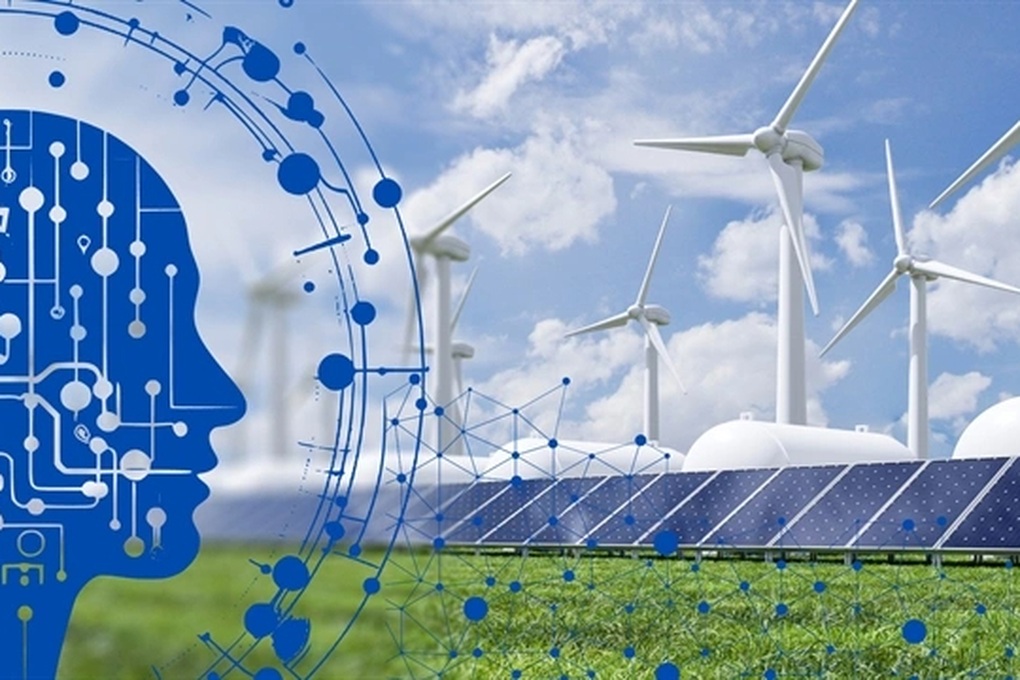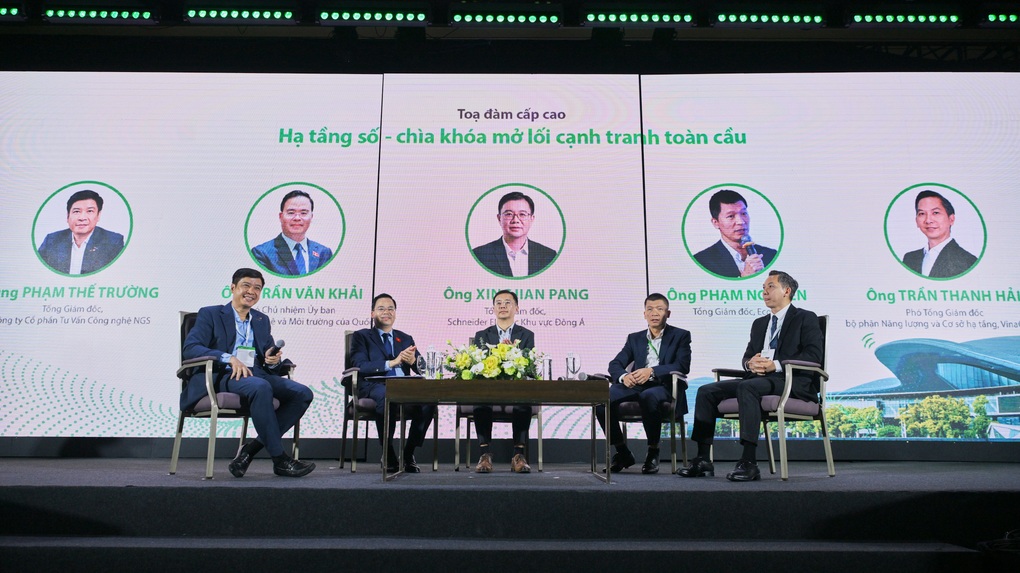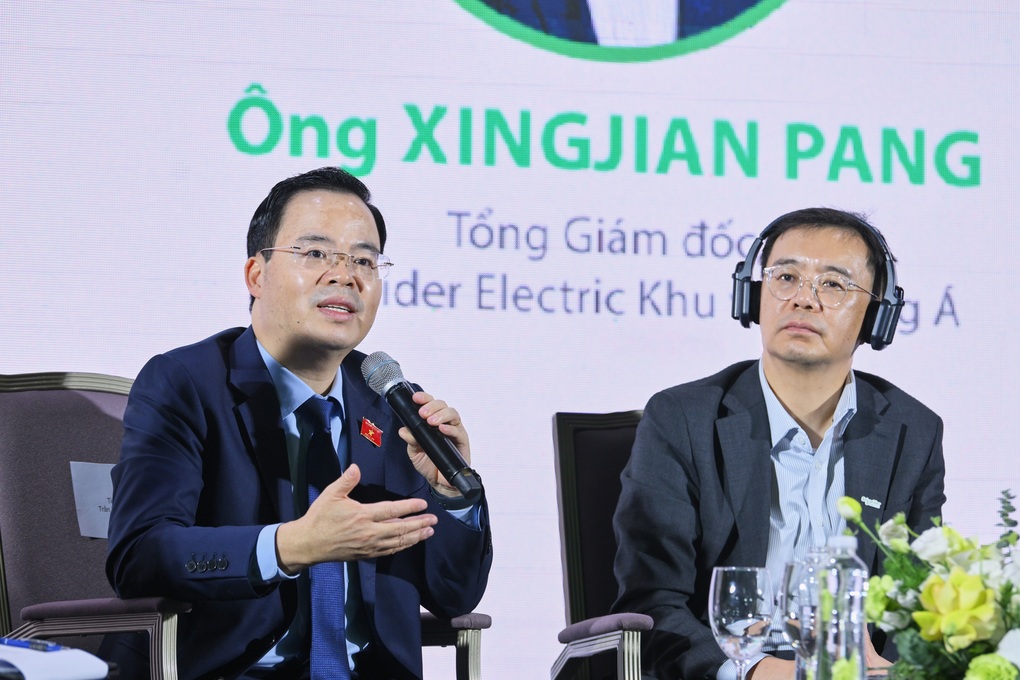
To develop AI, Vietnam needs to ensure a large source of energy (Illustration photo: ST).
Vietnam is witnessing a strong transformation, where artificial intelligence (AI) is no longer a concept of the future but has become a core driving force, reshaping every field from the economy , society to the way we build and operate infrastructure.
On the afternoon of September 17, Schneider Electric organized the "Innovation Day" event, bringing together leading experts in the technology field to sketch a panoramic picture of the era of artificial intelligence (AI) in Vietnam.
Besides unprecedented opportunities, Vietnam is also facing many major challenges in energy and sustainable development related to AI.
Energy “thirst” for AI
Mr. Dong Mai Lam, General Director of Schneider Electric Vietnam and Cambodia, said: “Across the ASEAN region, AI is expected to contribute an additional 10-18% to GDP growth, equivalent to about 1,000 billion USD by 2030.
In Vietnam alone, the AI market is expected to reach a size of 1.52 billion USD by 2030 and could contribute up to 130 billion USD to the economy by 2040,” Mr. Lam shared.

Panel discussion at the "Innovation Day" event (Photo: Organizing Committee).
However, this boom also creates a huge "thirst" for energy: "If in 2023, the energy consumption for global AI tasks was about 4.3 GW; by 2028, this number is expected to increase three to four times, reaching from 13.5 to 18 GW," Mr. Lam pointed out.
This increase not only requires a larger energy supply, but also forces the industry to completely rethink how data centers are designed, built, and operated.
Trends like liquid cooling, grid optimization, and direct medium voltage power distribution in the IT space are shaping the data centers of the future – more efficient, sustainable, and ready for high-density AI workloads.
Another structural change is the shift of AI from centralized data centers to the edge. By 2028, the share of AI processing will be balanced with about 50% at the center and 50% at the edge, according to Mr. Lam.
This shows that AI is moving closer to where data is created, from smart buildings, automated factories to IoT devices, ushering in a new era of intelligent, personalized applications.
Commitment from investor policy and vision
Faced with the need to develop strong digital infrastructure, the Government 's role in creating a favorable legal corridor is key.
Sharing at the discussion session, Dr. Tran Van Khai, Deputy Chairman of the National Assembly's Committee on Science , Technology and Environment, affirmed the deep concern of the Party and State for this field.
“Digital infrastructure and data centers are the heart of digital transformation, the essential foundation to serve technologies such as AI, Internet of Things (IoT) and Big Data,” emphasized Dr. Tran Van Khai.
He said the National Assembly is working day and night, making efforts to perfect the institutions to create the best environment for businesses. In the upcoming October session, the National Assembly will consider and pass two important draft laws, the Law on Artificial Intelligence and the Law on Data Security, creating a confident legal corridor for investors, developers and users.

Dr. Tran Van Khai, Deputy Chairman of the National Assembly's Committee on Science, Technology and Environment (Photo: BTC).
This policy vision is creating great attraction for investors. Mr. Tran Thanh Hai, Deputy General Director of Energy and Infrastructure Department of VinaCapital said: "We determined to focus on Hyperscale Data Centers, because if we go later, we have to go into new technologies, the best energy efficiency", Mr. Hai shared.
In particular, Mr. Hai emphasized the ESG (Environment - Social - Governance) factor and clean energy as a mandatory requirement of international investors.
"One of the most important requirements of hyperscalers is clean electricity. The new Electricity Law allowing the Direct Power Purchase Agreement (DPPA) is a great opportunity for data centers to become truly green data centers," Mr. Hai expressed his hope.
From a service provider perspective, Vietnamese businesses are accelerating to catch the AI wave.
Mr. Pham Nguyen, General Director of EcoDC, said that the data center market will change dramatically, moving from a centralized model to a decentralized “hub and spoke” model, developing where there are many customers.
To meet AI, data centers must be upgraded or built to higher standards. With electricity demand forecast to increase 5-7 times in the next 5 years, EcoDC is calling for investment to build DC Hyperscale and hopes to become the first customer to use clean electricity from renewable energy.
In terms of solutions, Mr. Xingjian Pang, General Director of Schneider Electric East Asia, committed to accompanying Vietnam with a comprehensive solution ecosystem “from grid to chip”, helping data centers, infrastructure and businesses operate efficiently and sustainably. He emphasized that no single company can do it all, but needs a strong partner ecosystem.
It can be seen that Vietnam’s development is closely linked to AI and digital transformation. To realize the vision of becoming a regional digital hub, close coordination between the Government, investors, businesses and technology providers is needed, with a strong commitment to a green, smart and sustainable future.
Source: https://dantri.com.vn/cong-nghe/giai-quyet-bai-toan-nang-luong-de-viet-nam-thanh-trung-tam-so-cua-khu-vuc-20250917182546850.htm



![[Photo] Closing of the 14th Conference of the 13th Party Central Committee](https://vphoto.vietnam.vn/thumb/1200x675/vietnam/resource/IMAGE/2025/11/06/1762404919012_a1-bnd-5975-5183-jpg.webp)












































































































Comment (0)